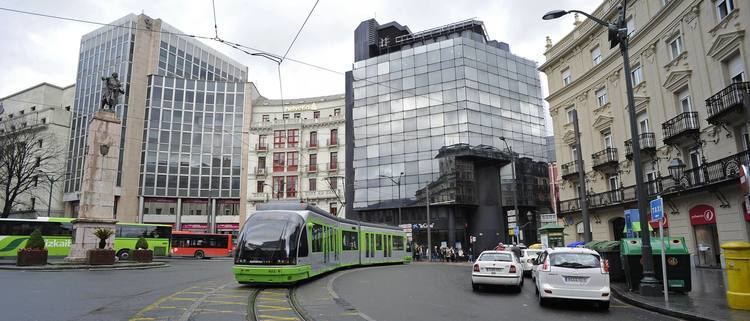Area 214 ha | Province Biscay | |
 | ||
Restaurants Kafe Antzokia, Bascook, La Brasa Canalla, La Viña del Ensanche, Nerua Guggenh Bilbao Hotels HOTEL ABANDO, Gran Hotel Domine Bilbao, Hotel Carlton, Hotel López de Haro, Hotel Miró | ||
Demography
The district has a population of 51,875 inhabitants and is divided into two neighbourhoods, the proper Abando and Indautxu to the west of Moyúa square. It has an area of 2.14 km2 (0.83 sq mi), all of it is built up and its population density is 24,240/km2 (62,780/sq mi).
Contents
History
It is speculated that Abando could correspond to the town of Portus Amanus, mentioned by Romans, but it's never been confirmed archaeologically.
In 1300, the city of Bilbao was founded in an area that was previously part of Abando and Begoña.
During the 18th century Abando was the most populated parish of Biscay, with about 2,100 inhabitants. This population was disperse in farms occupying a wide rural area, except for some denser areas close to the river, on the opposite shore of what was then Bilbao.
During the 19th century Bilbao became too congested and needed space to grow, so finally in 1870 Abando was annexed to expand Bilbao. This annexation affected one of the most famous natives of Abando, Sabino Arana, and was one of the driving forces for the inception of the Basque nationalism.
The Ensanche project of Alzola, Achúcarro and Hoffmeyer architects was approved in 1876, Abando was to become the modern center of Bilbao, with wide straight boulevards in a grid layout, the main one being Gran Vía de Don Diego López de Haro, contrasting with the maze of narrow alleys of the Casco Viejo, the old town of Bilbao.
Today the districts of Abando, Rekalde and Basurto are built in what was the old parish of Abando. In recent years the northern part of the district has been refurbished to create the new area of Abandoibarra (translated into Abando's shore), a vast formerly industrial area on the shore of the Estuary of Bilbao that now has been renewed and hosts the Guggenheim Bilbao Museum, Euskalduna Palace and many recreational and residential areas like the Isozaki Atea towers.
